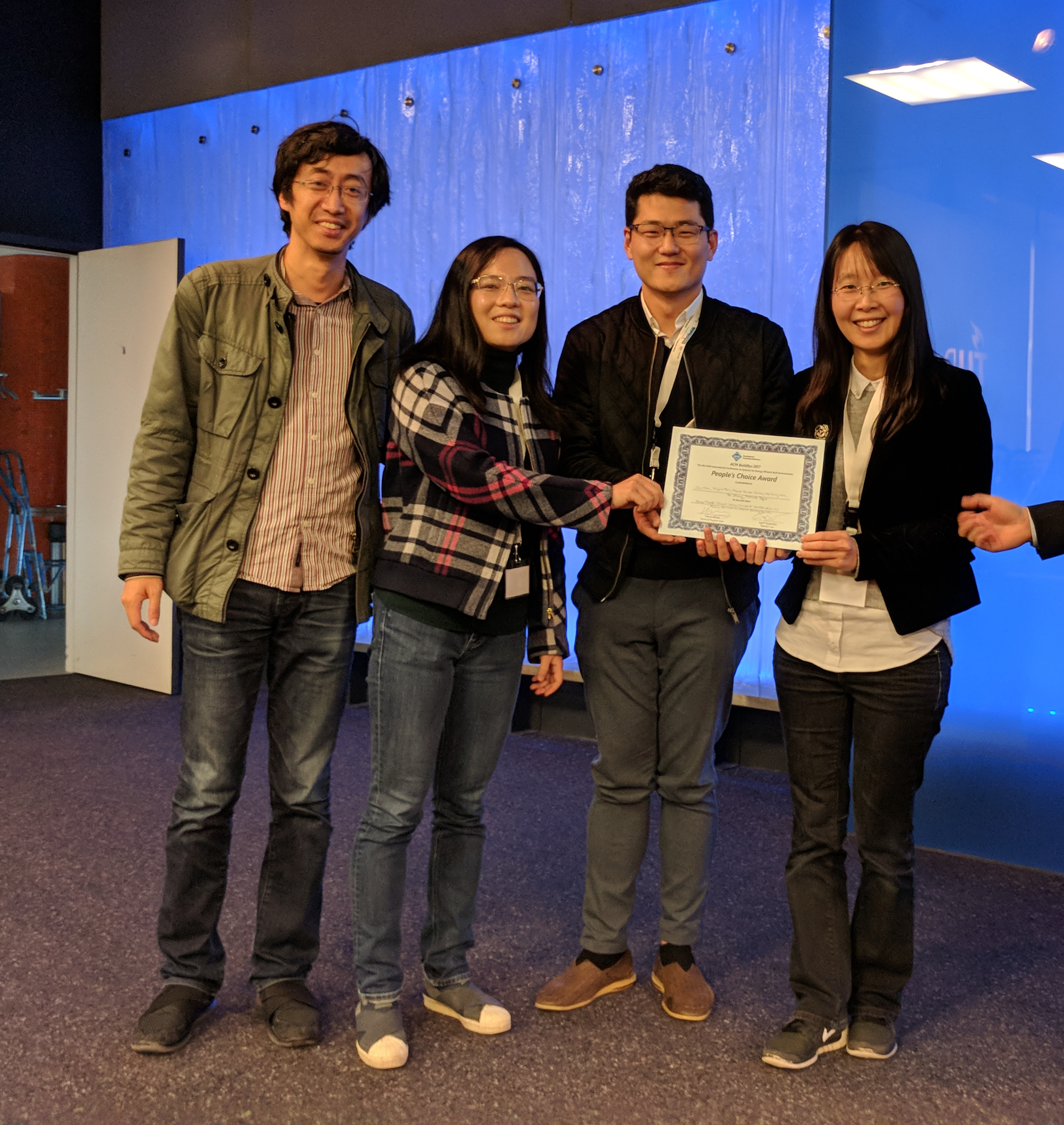Sensors for buildings and zebras
Lucas Grasha
Mar 19, 2018

Source: CMU Silicon Valley
From left to right : CMU-SV’s Pei Zhang, Shijia Pan, Jun Han, and CMU’s Hae Young Noh
Smart sensor systems and built environments intertwine to overcome challenges from energy efficiency to deployment. The Association for Computing Machinery (ACM) holds annual conferences, SenSys and BuildSys, to discuss these issues and their solutions. Carnegie Mellon University faculty from Silicon Valley (CMU-SV) and Pittsburgh attended the 15th ACM conferences this past fall in Delft, The Netherlands to present groundbreaking research.
Professor Pei Zhang, with Ph.D. students Jun Han and Shijia Pan, attended and received awards at SenSys and BuildSys. Zhang, an associate research professor of electrical and computer engineering (ECE) and information networking at CMU-SV, received the ACM SenSys Test of Time Award. It recognizes the lasting impact of a paper at least 10 years old on sensing system science and engineering. Zhang’s paper on the ZebraNet, the first deployment of a mobile sensor network, furthered research for sensor networks relative to hardware, building software on hardware, and working in deployments.
At BuildSys, a paper co-authored by Professors Pei Zhang, Patrick Tague, Hae Young Noh and Ph.D. students Jun Han and Shijia Pan received the audience choice award. Titled, “SenseTribute: Smart Home Occupant Identification via Fusion Across On-Object Sensing Devices,” the experiment deployed sensors on objects in a setting to determine occupancy. Instead of identifying occupants by using their prerecorded data, the sensors tracked occupants through their interactions with the objects. This shift in method allowed for an astounding boost in the sensors’ accuracy.
Jun Han, an ECE Ph.D. student advised by Professor Tague, expressed gratitude for the recognition of the award.
Much of the conference audience consisted of researchers in my field, so their recognition incredibly validates my work.
Jun Han, ECE Ph.D. student , Carnegie Mellon University
Shijia Pan, an ECE Ph.D. student advised by Professor Zhang, received the Best Presentation Award at the SenSys Doctoral Colloquium. At the colloquium, Pan gave a presentation titled, “Structure as Sensors: Learning Indoor Human Information from Physical Vibrations.” Her doctoral work relates to her work with Zhang, in that she also purposes “structures as sensors.” In her presentation, she detailed how sensors in a structure measure the vibrations caused by human activity to infer information about structure usage.
Pan excitedly received the awards at BuildSys and SenSys, since they represent the value of research and its presentation. Both of those values were embodied in the connections she established with talented researchers.
“We saw what sensing approaches other researchers used to solve real-world problems,” said Pan. “We had also the chance to collaborate with those researchers to see how our ambient structural vibration technology could aid their own systems.”